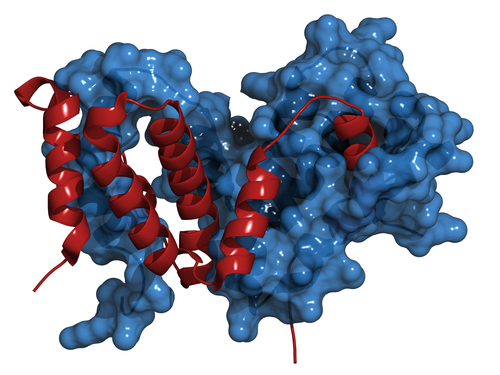 Researchers have uncovered an intriguing mechanism by which excessive γ-crystallin aggregation, a hallmark of cataract disease, occurs. Interestingly, undamaged γ-crystallin may actually facilitate the aggregation of γ-crystallin variants that have been damaged due to exposure to oxidative stress.
Researchers have uncovered an intriguing mechanism by which excessive γ-crystallin aggregation, a hallmark of cataract disease, occurs. Interestingly, undamaged γ-crystallin may actually facilitate the aggregation of γ-crystallin variants that have been damaged due to exposure to oxidative stress.
Aggregation of proteins is a trademark of many diseases, including Amyotrophic Lateral Sclerosis (ALS), Parkinson’s Disease, and several forms of cancer. Cataract disease is the leading cause of blindness worldwide and is also caused by aggregation of proteins. Specifically, the aggregation of γ-crystallin, which comprises about 20% of total protein in the lens core, contributes to the pathology of cataract disease. This increase in γ-crystallin aggregation leads to increased lens turbidity, which impairs the ability of light to reach the retina, ultimately affecting vision.
The study, published in The Journal of Biological Chemistry, analyzed the effect of introducing a point mutation (W42Q), which has been reported to cause hereditary cataract, into γ-crystallin in an effort to mimic an oxidative modification. This modification is relevant because a decrease in reducing power, a major feature of the aging lens, leads to an increase in oxidative modifications and is thought to contribute to γ-crystallin aggregation. Importantly, the researchers report that this γ-crystallin point mutant, hereby referred to as γ-crystallin (W42Q), displays an increased propensity to aggregate at physiological temperature (37°C). Furthermore, mass spectrometry indicated that γ-crystallin (W42Q) formed a non-native disulfide bond, which stabilized an unfolded intermediate of the protein, leading to aggregation.
Intriguingly, the researchers found that the presence of wild-type (normal) γ-crystallin dramatically increased the tendency of γ-crystallin (W42Q) to aggregate. In fact, wild-type γ-crystallin seemed to promote γ-crystallin (W42Q) aggregation, specifically. In several other pathologies characterized by protein aggregation, including ALS, the mutant variant of the protein has typically been shown to seed aggregation of the wild-type form of the protein. However, this study has defined an inverse interaction by which wild-type protein catalyzes the aggregation of the mutant variant. They speculate that wild-type γ-crystallin acts as a transient, decoy stabilizer of γ-crystallin (W42Q). Upon dissociation of the two proteins, wild-type γ-crystallin is left properly folded, while γ-crystallin (W42Q) is left in a partially unfolded state, stabilized by a non-native disulfide bond, leading to aggregation.
One implication of these findings is the ability to use this information to design ‘aggregation-resistant proteins or controllable protein polymers.’ Furthermore, it expands our understanding of how excessive aggregation occurs and offers promising information regarding potential ways to therapeutically combat γ-crystallin aggregation to prevent cataract disease. Lastly, the authors have uncovered a novel, intriguing mechanism by which aggregation occurs and is controlled.


